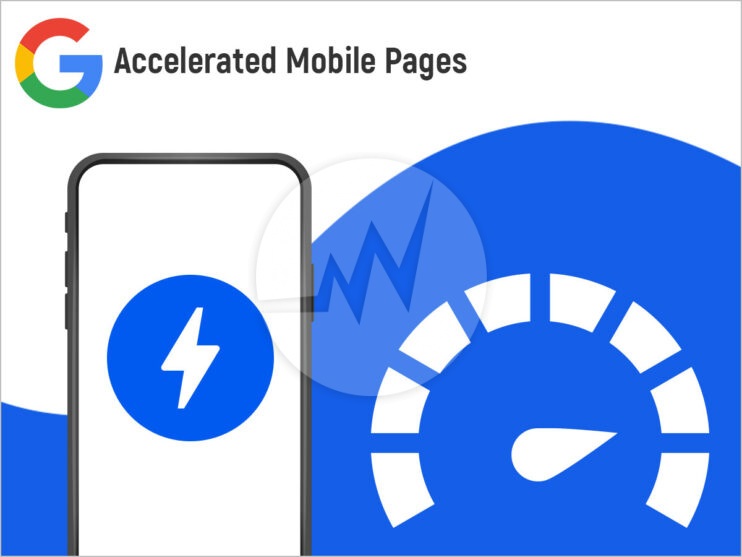The Complete Guide on Google Accelerated Mobile Pages (AMP)!

AMP (Accelerated Mobile Pages) is an initiative by Google to further improve the usability of mobile devices. AMP is a specific markup in the HTML5 source code that focuses on very fast loading times for websites on mobile devices. Due to 3G or 4G network connections, content on mobile devices is generally slower to load than on the desktop. AMP pages are designed for mobile use only and therefore do not work on desktop devices.
The goal of Google’s AMP project is to make mobile pages load faster. If the mobile pages load faster, more articles can be read at the same time and the bounce rate decreases due to slower loading times.
Currently, AMP is only supported by Google. The fast loading times are not related to Bing, Yahoo or other search engines.
Why was AMP developed?
The AMP project is urgently needed as mobile use is overtaking desktop search in many countries. In order to ensure the user friendliness and the loading times of the pages as desktop versions, a new solution was needed to improve the page speed.
The development of apps was the first reaction to offer a good user experience on mobile devices. Many publishers, advertisers and online retailers have developed their own mobile apps in order to offer their users a good user experience.
This approach is very successful because, on average, people spend much more time in apps than they do on mobile websites. But the apps have fewer monthly visitors than a mobile website. AMP was developed to provide a better user experience for those who visit mobile websites.
How does AMP make mobile websites faster?
Fast loading time can be achieved in two ways:
- Produce content that loads quickly
- Fast provision of the pages
AMP not only makes page loading faster by preferring to load items in the viewport (everything that can be seen within the screen without scrolling). Each AMP page is pre-rendered on a Google server, which means that the respective website is in the Google cache.
The users do not interact directly with their server but load the AMP website from the Google servers. This may seem like an additional barrier, but since the website is already loaded on a Google server, the website is already available in the browser before the search query has been made. This saves milliseconds.
3 Benefits of using AMP
1. The faster loading time of a website
The most important advantage of AMP is of course the fast loading time of the page. This offers users a good user experience. More importantly, AMP can help rank better in search results pages. Because the page loads faster and the page load time is one of the most important criteria for good SEO, AMP pages are more visible.
Google’s mobile-first algorithm favours sites that are optimized for mobile devices anyway.
2. The website can be checked in advance
Another benefit of AMP’s pre-rendering on Google’s server is that Google already had the time to pre-examine a page. AMP pages require a strict HTML5 structure. If a markup is missing, the entire AMP website will not work. Checking the pages ahead of time saves a few milliseconds again.
3. Pay close attention to AMP sites
A side effect of using AMP is the AMP logo that Google automatically displays in search engine results. The Blitz logo may not be familiar to many, but it is attracting attention, and so many more visitors.
3 disadvantages of using AMP
AMP also has some drawbacks to be aware of.
1. Google has the upper hand
Since this is a Google initiative, Google still has a lot of access to the pages. The best example of this is the fact that the AMP pages are loaded onto Google servers and are therefore very search engine dependent. So, your traffic here depends on Google.
2. JavaScript elements do not work
Another disadvantage of AMP is that interactive JavaScript elements do not work in AMP. Website tracking, which is essential to making good data-driven decisions, is becoming increasingly complex. While it is entirely possible to run most analytics tracks, there are some technical steps to keep in mind. Plug-and-play is also not possible.
3. Time and resources
Moving to an AMP optimized website takes time and of course, the right people or CMS systems are needed to work with it. Translating an entire website into AMP will take some time and effort to get everything set up optimally.
How can AMP be used?
Most standard CMS systems such as Magento or WordPress have plugins to make optimization on AMP pages relatively easy. If there is no CMS system with AMP plugins in place, the page can also be updated by manually changing the source code of each page.
Since AMP is an HTML5 language, you can make your pages AMP safe by adding additional markup.
In summary, AMP is a promising project that is spreading more and more. By converting your pages to AMP, you are definitely gaining a competitive advantage. Still, it is desirable that AMP sites become more popular and plug-and-play.
Furthermore, Google AMP are enhancing digital marketing strategies, increase rankings and provide better mobile-friendly experience! If you wanted to stay competitive in the mobile market, you should be AMP optimized. If you are looking to convert your website or online store in AMP or in a mobile-friendly experience, explore our website design services!



